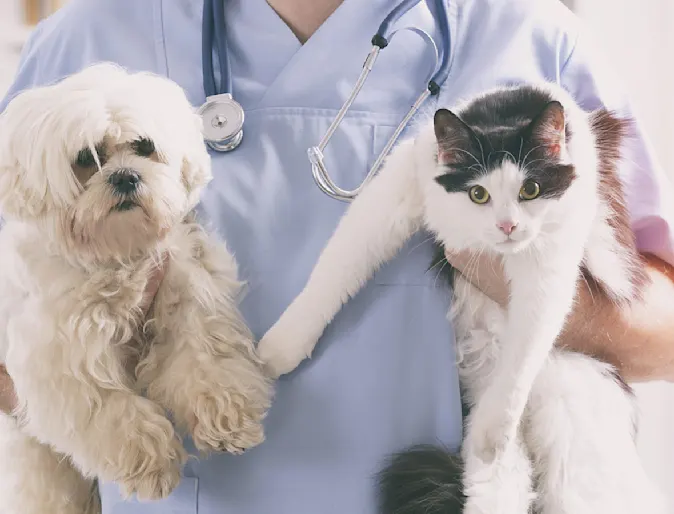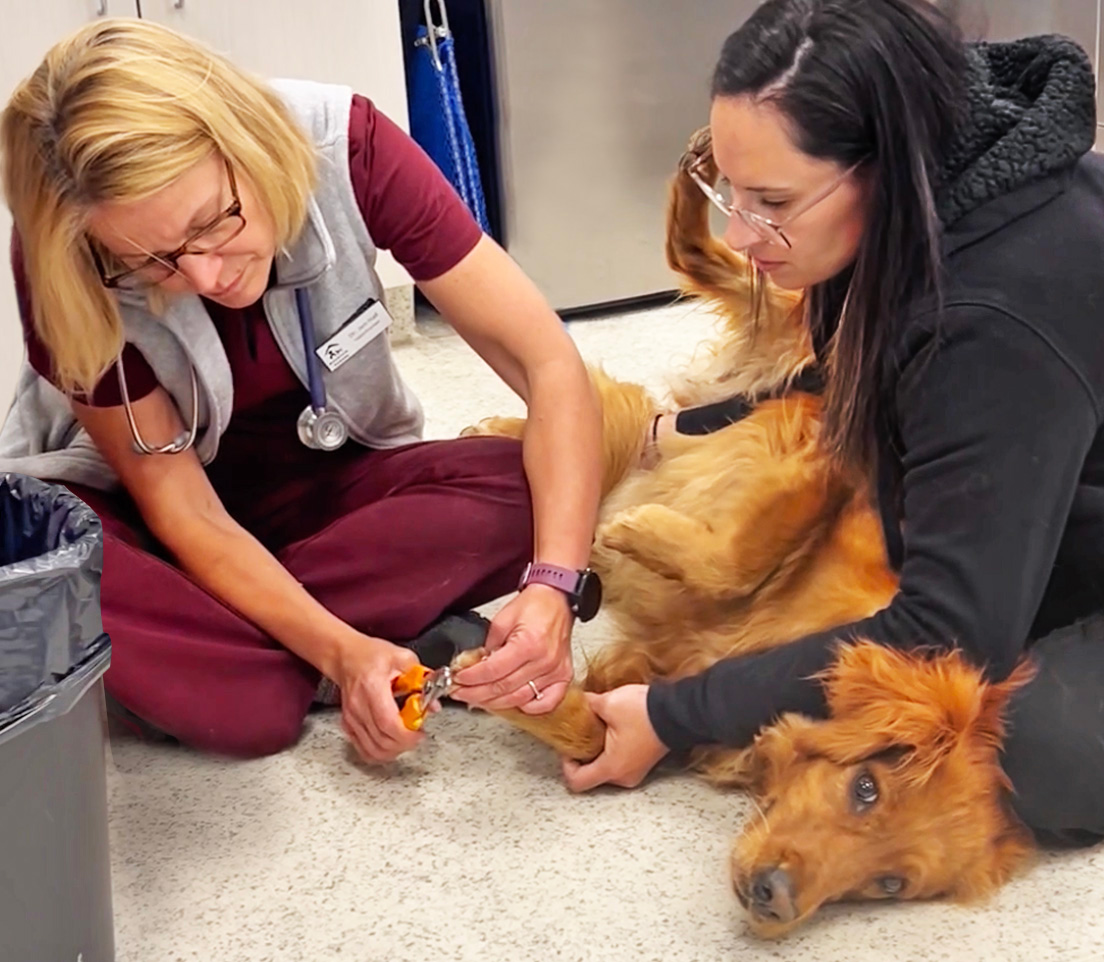What Happens During a Visit to an emergency vet? Step-by-Step Walkthrough
What Happens During a Visit to an emergency vet? Step-by-Step Walkthrough
Blog Article
Why Pet Rehab Is Essential: the Perks of Veterinarian Providers for Your Pet dog's Recuperation
Pet rehab is an important part of recuperation for pet dogs encountering injuries or disabilities. Veterinary services give important support with tailored rehabilitation plans that address private needs. These strategies commonly include discomfort management, physical therapy, and nutritional assistance. Understanding the different elements of pet rehabilitation can illuminate its importance in improving recovery results. What specific advantages do these services offer, and how can they transform an animal's healing journey?
Comprehending Animal Recovery
Animal rehab incorporates a variety of restorative techniques intended at restoring the wellness and functionality of hurt or impaired pets. This field integrates numerous strategies, consisting of physical therapy, hydrotherapy, and occupational therapy, customized to fulfill the specific requirements of each animal. Recovery experts assess a pet's problem, establishing individualized therapy plans that might entail workouts to reinforce muscle mass, improve wheelchair, and boost total health. The process not only concentrates on physical healing however likewise addresses psychological and behavioral facets. Animals commonly experience tension and anxiety adhering to an injury, making mental wellness factors to consider vital in recovery. By developing an encouraging environment, specialists can help pets reclaim their confidence and adapt to their new circumstances. With routine sessions, pets can experience considerable enhancements, inevitably causing a much better lifestyle. Generally, comprehending pet rehabilitation highlights its importance in promoting recuperation and boosting the bond in between pets and their owners.
The Duty of Discomfort Monitoring in Recuperation
How crucial works discomfort administration in the recuperation of injured animals? It plays an important duty in promoting healing and enhancing the overall well-being of animals. Appropriate pain management not only relieves discomfort yet also advertises mobility, enabling pets to take part in rehab tasks needed for recovery. When pain is successfully handled, pets tend to react favorably to treatment, leading to quicker rehabilitation outcomes.Veterinarians make use of different methods to assess and attend to discomfort, including medicines, acupuncture, and different therapies. By customizing discomfort management methods to the specific requirements of each pet, veterinarians can assure that pet dogs continue to be calm and cooperative throughout their healing journey. Minimizing pain assists reduce stress, which can inhibit recovery and lengthen recovery times. To sum up, reliable discomfort monitoring is necessary for enhancing the recuperation process and enhancing the high quality of life for injured pets.
Physical Treatment Strategies for Family Pets
Many physical treatment techniques are readily available to assist in the rehab of animals recovering from injuries or surgeries (veterinary cardiologist near me). These methods can boost mobility, alleviate discomfort, and advertise recovery. Therapeutic exercises, as an example, aid strengthen muscular tissues and enhance joint feature, enabling animals to regain their physical capacities progressively. Hands-on treatment, which includes massage therapy and mobilization, can relieve tension and boost flow, adding to a quicker recovery.Other strategies such as passive variety of movement exercises motivate joint adaptability and decrease rigidity. Furthermore, electrical excitement therapy may be utilized to boost nerves and muscle mass, promoting recovery and discomfort relief.Veterinary professionals frequently tailor these strategies per pet's certain needs, guaranteeing a complete rehab plan. By implementing these physical treatment techniques, animals can experience better lifestyle and a more successful healing from their disorders. The integration of these methods into rehab programs is crucial for excellent healing results
Advantages of Hydrotherapy for Rehabilitation
Hydrotherapy supplies substantial benefits in animal rehab, specifically in improving flexibility. This water-based therapy advertises discomfort relief while supplying comfort to wounded or recovering pet dogs. Additionally, it assists in strength-building exercises that add to overall physical recuperation.
Boosted Movement Improvement
As animals recover from injuries or surgical procedures, improved wheelchair typically becomes a key goal of their recovery. Hydrotherapy functions as a useful device in accomplishing this goal. Through water-based workouts, animals can take part in low-impact movements that promote joint mobility and reinforce muscle mass without the stress of weight-bearing activities. The buoyancy of water supports their bodies, enabling enhanced range of motion and movement improvement. Additionally, hydrotherapy urges better balance and coordination, which are essential for bring back regular movement patterns. Routine sessions can cause substantial development in an animal's physical capacities, ultimately boosting their high quality of life. This method not just aids in healing yet likewise promotes an extra energetic and meeting way of living post-rehabilitation.
Pain Relief and Comfort

Alleviation from pain is a crucial aspect of animal rehabilitation, and hydrotherapy greatly adds to this procedure. By utilizing water's buoyancy, hydrotherapy decreases joint tension and reduces discomfort during motion. This healing strategy gives a relaxing environment where family pets can engage in mild exercises without the complete weight of their bodies influencing their recovery. The warm water stimulates blood flow, promoting recovery while likewise motivating leisure. Furthermore, hydrotherapy sessions can be tailored to meet the specific needs of the pet, making sure suitable convenience. As pet dogs experience minimized discomfort and enhanced convenience levels, their total readiness to take part in rehabilitation tasks frequently boosts, bring about a much more efficient healing journey. Hydrotherapy serves as a vital tool in boosting discomfort alleviation and convenience throughout rehabilitation.
Strength Building Exercises
Strength-building workouts play a vital duty in the rehab process, with hydrotherapy offering unique benefits. This form of treatment utilizes water resistance to boost muscle mass strength without placing excessive stress on the joints. The buoyancy of water sustains the family pet's weight, enabling safer movement and enhanced series of activity. Furthermore, hydrotherapy can boost cardiovascular health and promote overall physical fitness, helping in quicker recuperation from injuries or surgical procedures. The controlled environment likewise decreases the risk of reinjury, making it a perfect alternative for animals requiring recovery. Routine hydrotherapy sessions can lead to recognizable improvements in mobility, toughness, and endurance, inevitably boosting the family pet's quality of life and capacity to go back to normal activities.
Value of Customized Rehab Strategies
Personalized rehabilitation plans are important for resolving the distinct demands of each animal, ensuring individualized therapy approaches. These strategies permit for efficient development monitoring and essential modifications, cultivating optimal recovery end results. Additionally, an all natural technique can enhance the general health of the pet, advertising a much more detailed rehab experience.
Individualized Treatment Approaches
While many rehab programs embrace a one-size-fits-all technique, the unique requirements of each animal require personalized therapy prepare for optimal recovery. Personalized rehab strategies consider various aspects, including the animal's types, age, case history, and particular injuries or conditions. By tailoring interventions, vets can resolve each family pet's unique challenges, making the most of the efficiency of the recovery procedure. Individualized plans might incorporate various methods such as physical therapy, hydrotherapy, and restorative workouts, making certain that the treatment lines up with the pet's capacities and progression. Additionally, personalized methods promote a stronger bond between the family pet and the caretaker, promoting a more engaging and supportive recuperation environment. Ultimately, customized treatment is crucial for accomplishing best possible outcomes in animal rehab.
Development Monitoring and Adjustments

Holistic Recuperation Methods
Holistic recuperation techniques are crucial for efficient pet recovery, as they stress the relevance of customized therapy strategies tailored per pet's particular needs. This method thinks about the physical, emotional, and ecological factors influencing recovery. Custom-made rehabilitation plans may include a combination of physical treatment, dietary counseling, and behavior adjustments. By dealing with these varied aspects, vets can enhance the general well-being of the animal and advertise a quicker recuperation. Additionally, such tailored methods promote a much deeper understanding of the animal's distinct difficulties, leading to extra efficient interventions. Ultimately, all natural recovery strategies not only improve physical health however likewise contribute to the pet's mental and psychological stability, making certain a detailed recovery experience.
The Influence of Nourishment on Recovery
Nourishment plays a vital duty in the recovery process for restoring pets, often determining the rate and efficiency of recovery. A healthy diet offers the essential nutrients that sustain cells repair work, improve the body immune system, and improve total vitality. Protein is specifically vital, as it helps in muscle rebuilding and recovery from injuries. Essential fatty acids, vitamins, and minerals also add to reducing swelling and promoting ideal mobile function.Veterinarians often stress the importance of customized nourishment plans, thinking about each animal's specific requirements, age, and health status. Proper hydration is just as essential, as fluids promote nutrient absorption and aid in detoxification. By making certain that pet dogs receive appropriate nourishment, website caretakers can greatly enhance their opportunities of an effective recuperation, leading to better lasting health and wellness results. Eventually, nutrition acts as a foundational aspect in the recovery journey, supporting animals in gaining back stamina and resilience post-injury or ailment.
Success Stories: Animals Who Thrived After Recovery
Successful rehab tales abound, showcasing the strength of pets who have overcome considerable obstacles. Take, for example, Bella, a gold retriever who suffered serious injuries from a cars and truck mishap. With dedicated vet treatment and a complete rehabilitation program, she regained her wheelchair and went back to her lively self, much to her owner's joy. Likewise, Max, an elderly feline diagnosed with joint inflammation, experienced exceptional renovation through a combination of physical therapy and discomfort monitoring. His newly found dexterity enabled him to enjoy his preferred sunbathing spots once again. One more inspiring situation is that of Coco, a saved greyhound that overcame stress and anxiety via actions adjustment and socialization strategies, allowing her to prosper in her new home. These success tales exhibit the transformative power of pet rehab, highlighting that with the best assistance, pets can not just recoup yet lead fulfilling lives, enhancing the bonds they show to their family members.
Frequently Asked Concerns
The length of time Does the Recovery Process Commonly Take for Pet Dogs?
The rehab process for family pets typically varies based upon the injury or condition, ranging from a few weeks to a number of months. Specific progression, treatment type, and commitment to workouts significantly affect the total period of healing.
Are There Any Kind Of Risks Linked With Animal Recovery?
Animal recovery might bring risks such as worsening of injuries, incorrect techniques leading to discomfort, or insufficient monitoring throughout recuperation. These variables can impede progress and influence the overall efficiency of the recovery process.

Can All Pets Advantage From Rehab Providers?
Not all pets may require recovery, yet lots of can profit substantially. Recovery solutions can improve flexibility, relieve pain, and boost general well-being, specifically for those recuperating from injuries, surgeries, or chronic problems.
Exactly How Can I Prepare My Pet for Rehabilitation Procedure?

What Signs Indicate My Family Pet Demands Rehabilitation?
Signs suggesting an animal may require rehab consist of difficulty strolling, limping, reduced task levels, reluctance to leap, or signs of discomfort. Observing these habits can motivate owners to seek professional analysis and therapy for their animals.
Report this page